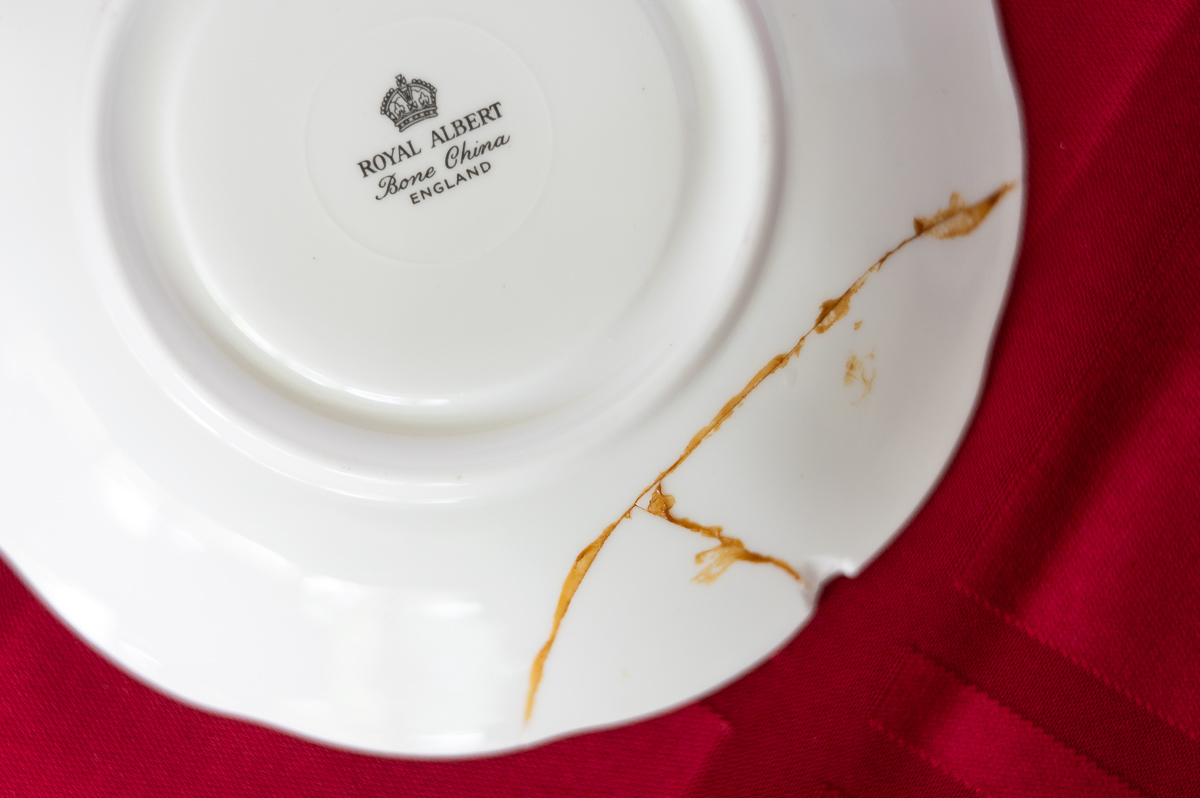Truly, it was an accident. In a moment of juvenile horseplay I slammed into the glass shelves mounted on our dining room wall and sent Mom’s entire collection of porcelain teacups and saucers crashing to the floor. The clatter was unmistakable. On hearing it she rushed into the room and her eyes, already swelling with tears, caught mine. I recall no scolding, only her plaintive, “Why can’t we have nice things?” Nearly every piece was broken, and many shattered.
The real damage was more severe: I’d broken my Mother’s heart. “Spare the rod,” I insist. But understand, on that day I’d have welcomed a wooden spoon swiftly applied to my backside. Six children, a practicing RN, a leader of women’s ministries, and confidant to so many, of necessity and by choice her life was mostly given to others. The porcelain ware was hers, gifts from friends and things she had purchased.
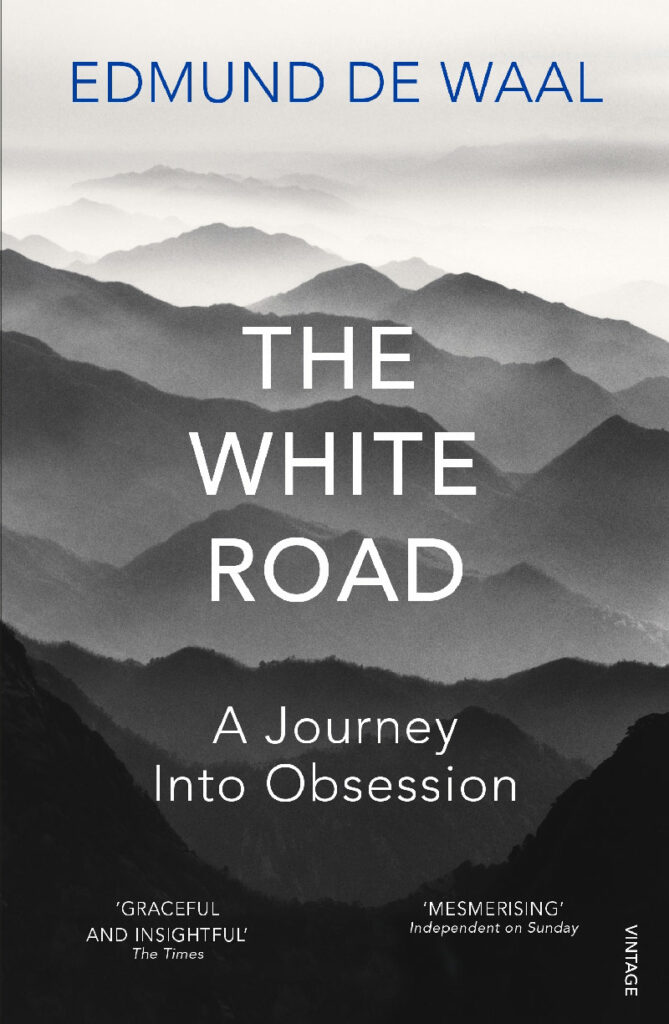
The White Road: A Journey into Obsession is Edmund de Waal’s memoir-like account of his desire to recover the storied history of porcelain and its “mystical allure.” The quest took him to Jingdezhen, Venice, Versailles, Dublin, Dresden, Bristol, and Philadelphia. The finest of clay bodies, porcelain consists primarily of kaolin, with smaller quantities of minerals like feldspar, steatite, quartz, and alabaster added in. De Waal, a celebrated ceramicist himself, exults:
[P]orcelain is so plastic. Pinch a walnut-sized piece between thumb and forefingers until it is as thin as paper, until the whorls of your fingers emerge. Keep pinching. It feels endless. You feel it will get thinner and thinner until it is as thin as gold leaf and lifts into the air. And it feels clean. Your hands feel cleaner after you have used it. It feels white. By which I mean it is full of anticipation of possibility. It is a material that records every moment of thinking, every change of thought.[1]
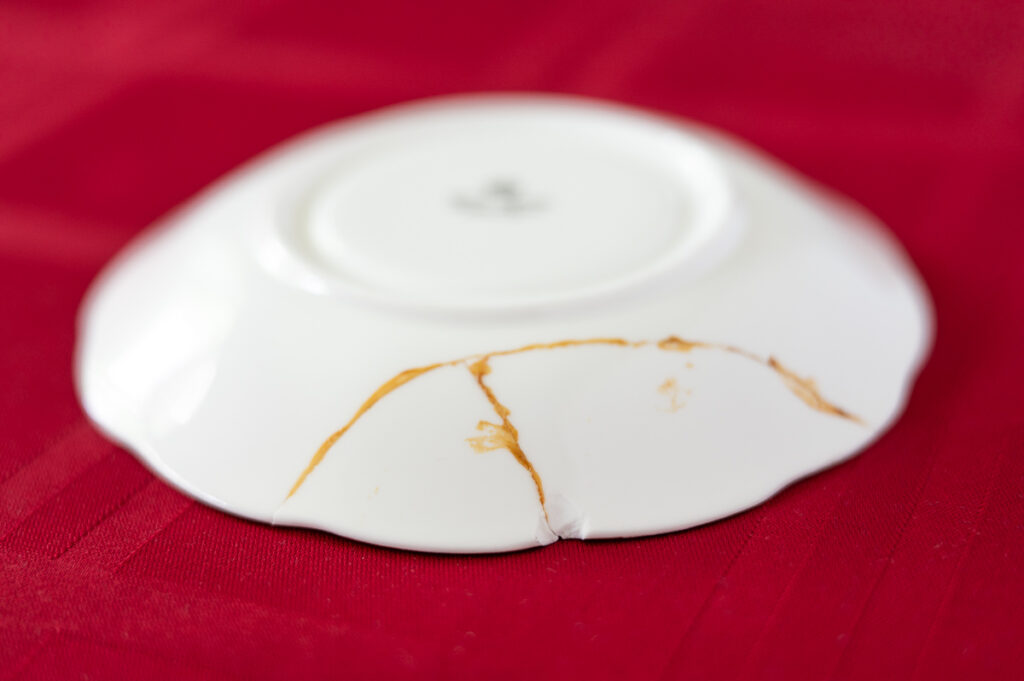
Thin, strong, and translucent, porcelain ware is fired in kilns at temperatures between 2381° and 2455 °F (earthenware by comparison at 1200 °F and stoneware, 2000 to 2400 °F). The art form, in its primitive state, originated in first-century China during the Tang Dynasty. Famously, Italian explorer Marco Polo, who lived in China for 17 years and, for a long while, served as an emissary to Kubla Kahn, introduced porcelain to Europe around 1290. Alongside lapis lazuli, ivory, jade, rare spices, and silk, “white gold” was treasured by emperors, kings, and wealthy merchants. Often decorated with distinctive blue (cobalt oxide) brush work, porcelain’s most ardent collectors consider it the epitome of beauty.
My mother and I swept the mess that used to be her collection from the dining room floor, rescuing larger fragments and mending what we could with China cement (an archaic term, I suspect). Decades later, while readying our parent’s house for sale, my sisters purchased six storage bins. Sorting through hundreds of photographs, cards, clippings, and keepsakes, they selected items that each of us might like to have and set them aside in our respective plastic bins. My cache included a porcelain teacup and saucer (above). Matching marks spelled out on the bottom of each read: ROYAL ALBERT Bone China ENGLAND. The set features aqua blue cornflowers and yellow-gold wheat heads, with gilding on the cup handle and foot, and the saucer rim. At some point, the saucer had been broken and repaired and I knew (but not my siblings) how that wound occurred and what had been done to mend it. Searching online, I found a replacement saucer available for $32 on eBay. A “rare find,” wrote the seller. I did not purchase it.
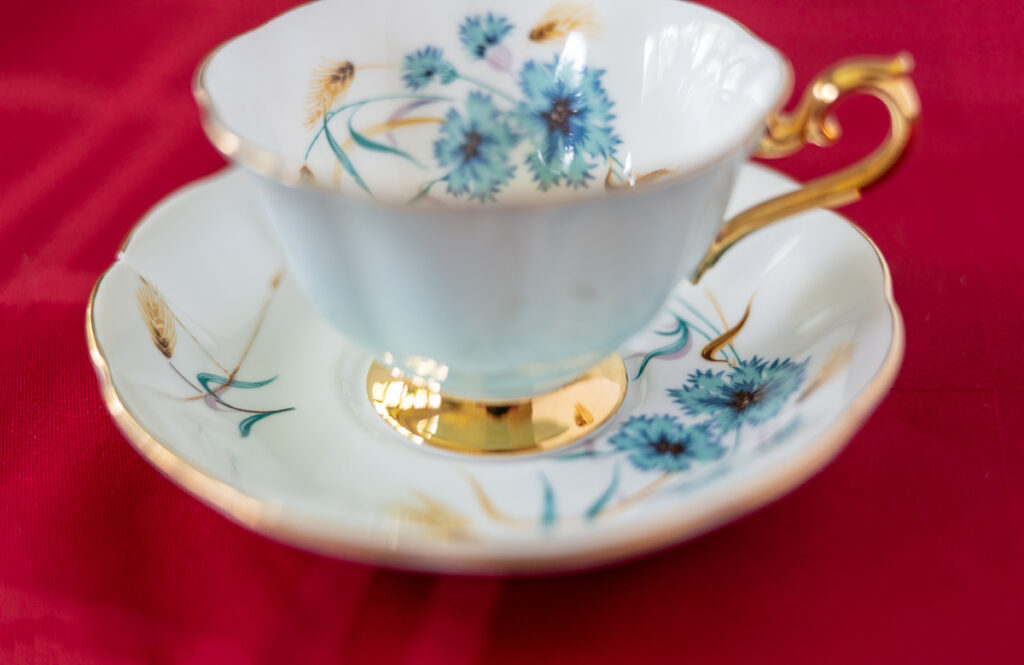
The two-story house we emptied was in the western suburbs of Milwaukee. When our family moved into it I was ten. Somehow our parents shoehorned eight people of varying sizes and dispositions into four bedrooms and that house served us well enough. But having moved there from my grandfather’s Upper Peninsula farm, the place seemed plain to me, and its one-acre lot confining.
There were nicer things in our home and mostly they belonged to our mother. A built-in China cabinet and mahogany buffet in the dining room contained her silver flatware and tea service, cut crystal relish dishes and vases, crocheted doilies, leaded glass platters—things washed and dried by hand. Mom had an intuitive sense for how to set the room and table for guests. In spring, a fuchsia peony floated in a globed dish or pussy willows arranged in a tall vase. In summer, a bouquet of zinnias cut from Dad’s garden. On special occasions, linen napkins and tablecloths with lighted candles made appearances. Mom hosted, Dad helped.
Most often, Sunday dinner guests were out-of-town relatives and friends, or pastors and missionaries visiting our church. During one dinner conversation Mom discovered that our guest, a seminary professor, was an amateur pianist with a fondness for Chopin. Coffee and dessert were served. Then, yielding to her persuasion, we moved to the living room and he played several short pieces. In our home, at least for a while, you and your life mattered.
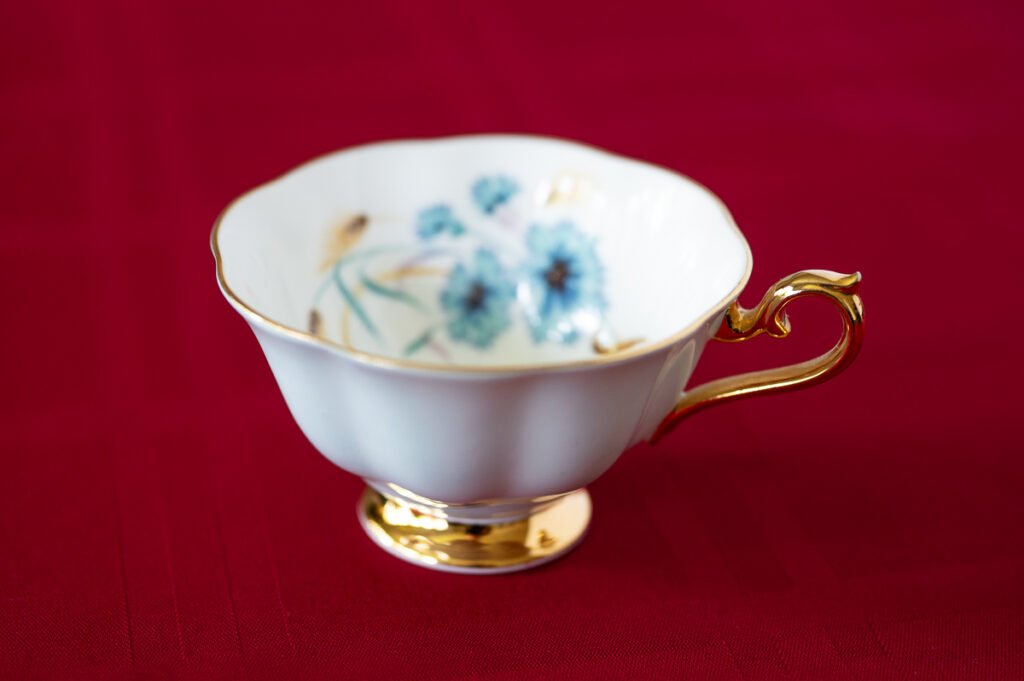
Mom lost her battle with ALS in 2001, but Dad remained in their home for more than seven years. By his mid-80s, however, the house, lawn, berry patches, and gardens became too much to manage and several hard falls signaled it was time to move to assisted living. Before we could sell the house a few details needed to be worked out so I drove to Milwaukee to meet with Dad’s attorney. Before returning home to Madison, I planned to check in on the house, wanting to make sure that things were as they should be.
I still had a key and let myself in. As I entered no one called out, “We’re in here.” What had I expected? The house was unoccupied. Still, I was unprepared for the silence.
I headed upstairs, stepping into each unfurnished room, recalling where each of us slept. Returning to the first floor, I walked through the living room, dining room, and into the master suite Dad had added for mom after her diagnosis. I looked for a while through their bedroom windows into the long tree-filled backyard, then headed into the basement and out to the garage to complete my tour. Every room, vacant. Every closet and cupboard, empty.
The emptiness of the house met me and grief flooded in. Had not my siblings and I gathered for that earlier sadness in Mom and Dad’s home? The day the hospice nurse, sensing it was time to turn off the oxygen that sustained our mother, kindly took Dad to the side. The morning Mom’s breathing slowed until there were no more breaths. Now a deeper grief arrived and full-force. Absent Mom’s presence and things, the house was negative space, via negativa. I wept inconsolably. The final stanza of Yehuda Amichai’s poem, The Place Where We Are Right, nearly captures it:
But doubt and loves
dig up the world
like a mole, a plow.
And a whisper will be heard in the place
where the ruined
house once stood.[2]
Given his fascination with kintsugi, the ancient Japanese art of repairing broken vessels, Makoto Fujimura might encourage me to replace the crude lines of brown-orange glue on Mom’s Royal Albert saucer with gold and lacquer. Writes Mako, “the Kintsugi master will take the broken work and create a restored piece that makes the broken parts even more visually sophisticated. No two works, done with such mastery, will look the same or break in the same way.” Kintsugi, as Fujimura wisely explains, abounds in material and metaphorical potential.[3]
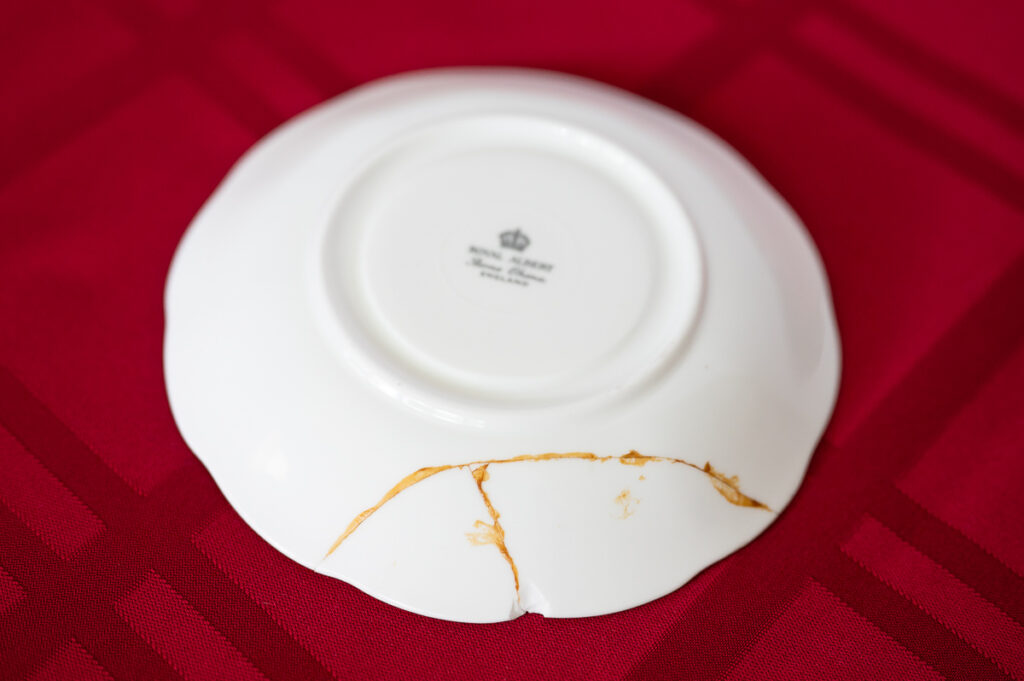
In this case, I think it best that my decades-old clumsy repair remains. Here is why. Some years ago amid a season of dark struggle, spiritual guide Fr. Rick Ganz reminded me that even after wounds heal, as they usually do, scar tissue remains. “Cam, let those scars be. Let them teach you.” An aside (though central), is it not a puzzlement that the Son of Man’s resurrected body bore the marks of his crucifixion?
Comprehending the beautiful—that transcendental virtue—is no simple business. That said, is not simple beauty the most rare? Our mother loved lovely things as they were to her: music, the faces of her grandchildren, fresh cut flowers, a perfect loaf of cinnamon bread, porcelain teacups. That simple beauty was resident in our mother, but now every trace of her finer self and finer things was gone. There was no whisper to be heard. And yet, the greater beauty—the beauty of God resident in all created things—abounds. And I remain as I always was my mother’s son.*
Notes:
[1] Edmund de Waal, The White Road: Journey into an Obsession (New York: Farrar, Straus and Giroux, 2016), 5. After writing this blog, I discovered that this same paragraph was cited in a 2015 New Yorker essay.
[2] The late Yehuda Amichai is one of Israel’s most celebrated poets. “The Place Where We Are Right,” is cited by Christian Wiman in Zero At the Bone: Fifty Essays Against Despair (New York: Farrar, Straus and Giroux, 2023), 179.
[3] Makoto Fujimura, Art and Faith: A Theology of Making (Princeton: Princeton University Press, 2020), 44-45.
*Affection requires me to point out that my brother is also my mother’s son and my four sisters, her daughters.
Porcelain photography by Barry Sherbeck.

